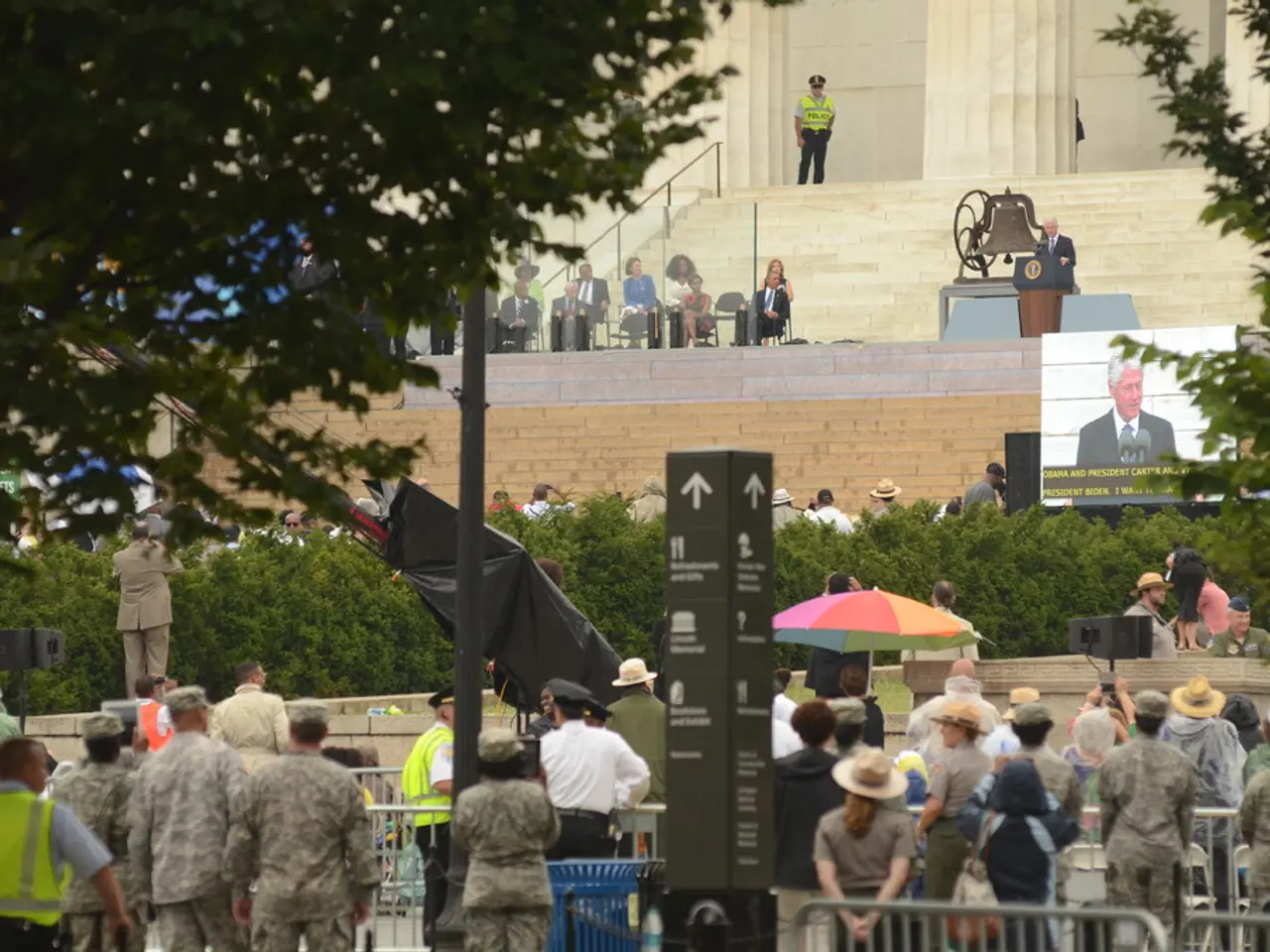Struggles persist for VA hospitals in staffing positions, as reported by watchdog organizations
The Trump administration's workforce reduction goals and recruitment difficulties have led to a sharp rise in severe staffing shortages at VA medical facilities, impairing veterans' access to care and affecting the quality of services provided.
According to a report by the VA's Office of Inspector General, severe staffing shortages were reported for clinical occupations such as doctors and psychologists, as well as for non-clinical jobs such as police and custodial workers. Nearly all of the facilities (94%) reported a shortage for medical officer occupations that include doctors, while vacancy rates for nurses are 10%.
Jacqueline Simon, policy director for the American Federation of Government Employees, believes the surveys reflect the Trump administration's hostility towards the federal workforce and plans to privatize the VA. U.S. Sen. Mark Warner shares this sentiment, stating that the administration has made it harder for public servants to do their jobs and ultimately harder for veterans to get the care they've earned.
The increase in severe staffing shortages was primarily driven by significant workforce reductions, hiring challenges, and policy decisions aimed at cutting VA positions. The Trump administration initially aimed to reduce the VA workforce by up to 80,000 positions nationwide through the Department of Government Efficiency initiative, later scaling back to a target reduction of about 30,000 positions by the end of the 2025 fiscal year.
Staffing shortages were especially acute for medical officers (94% of facilities) and nurses (79% of facilities). The VA lost more than 600 doctors and about 1,900 nurses during the period assessed, with doctor numbers declining monthly since Trump took office. Hiring challenges were compounded by a nationwide shortage of health care workers and a reportedly slow VA hiring process.
The administration pursued efforts to privatize parts of the VA healthcare system and cut VA staff, which veterans and Democratic lawmakers argued drove away top-tier talent. The VA's press secretary, Pete Kasperowicz, stated that the report is not based on vacancies and is therefore not a reliable indicator of staffing shortages.
The effects of these staffing shortages are concerning. Increased severe staffing shortages risked diminishing care for veterans, worsening access to medical services in specialties including urology, surgery, oncology, and mental health. Fewer staff available meant veterans faced longer appointment wait times for primary, mental health, and specialty care, particularly for new patients. Non-clinical role shortages, such as police officers and maintenance workers, also rose, threatening overall hospital operations and safety.
The VA responded by referring some veterans to private providers and increasing use of telehealth, but concerns persist that these are stopgap measures rather than solutions to underlying workforce problems. Simon states that the staffing shortages will lead to longer wait times for appointments, a lack of specialists, and a need for veterans to seek care in the private sector.
In conclusion, the Trump administration's workforce reduction goals and recruitment difficulties have led to a significant impact on veterans' access to care and the quality of services provided at VA hospitals. The VA's recent announcement to terminate collective bargaining agreements for most VA bargaining-unit employees could further hurt recruitment, exacerbating the staffing shortages and potentially worsening the situation for veterans seeking care.
- The VA's Office of Inspector General reported severe staffing shortages at VA medical facilities, affecting both clinical and non-clinical jobs, such as doctors, psychologists, police, and custodial workers.
- The Trump administration's plans to privatize the VA and reduce the workforce by up to 80,000 positions are believed by some to be the primary cause of these staffing shortages.
- Severe staffing shortages were especially acute for medical officers (94% of facilities) and nurses (79% of facilities), with the VA losing over 600 doctors and about 1,900 nurses during the assessment period.
- The Administration's attempts to privatize parts of the VA healthcare system and cut VA staff have been met with criticism from veterans and Democratic lawmakers, who argue that these actions drive away top-tier talent.
- Concerns arise over the potential impact of these staffing shortages on veterans, including longer appointment wait times, a lack of specialists, and a need for veterans to seek care in the private sector.
- The VA's recent decision to terminate collective bargaining agreements for most VA bargaining-unit employees could further exacerbate the staffing shortages, potentially worsening the situation for veterans seeking care.




